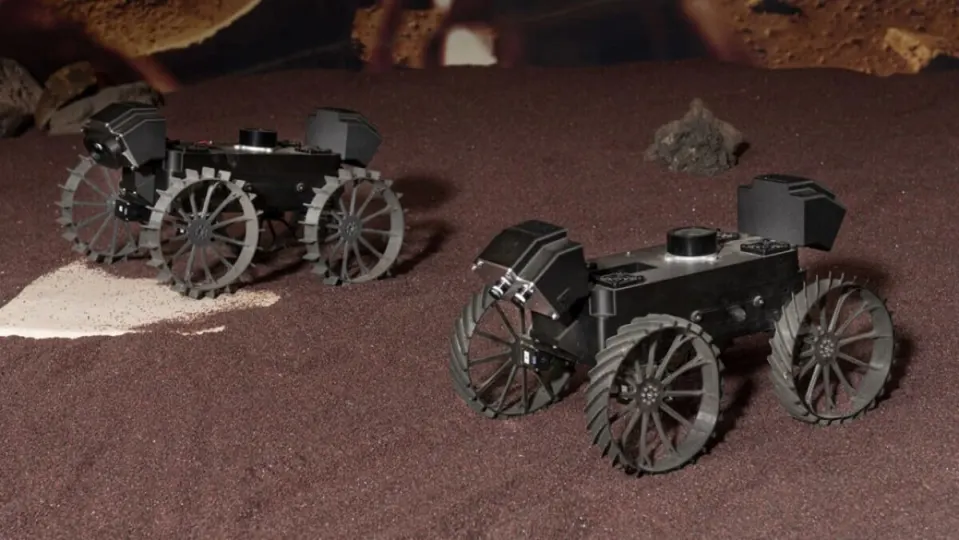If you liked the Curiosity Rover, wait until you meet its three little siblings. NASA is sending a trio of small rovers (autonomous exploration vehicles) to the Moon with the aim of enhancing mission efficiency. About the size of a suitcase, these four-wheeled vehicles will 3D-map the lunar surface without direct human intervention.
Known as CADRE (short for “Cooperative Autonomous Distributed Robotic Exploration”), the intrepid trio will journey to the Moon in 2024 aboard Intuitive Machines’ third lunar lander, the IM-3, as part of NASA’s Commercial Lunar Payload Services (CLPS) initiative.
The three small CADRE rovers will descend to the Moon via anchoring within the Reiner Gamma region, a lunar geological feature known as the “lunar swirl.” This area is located in the western Oceanus Procellarum, on the western edge of the near side of the Moon, just north of the equator.
The trio of mini rovers will have to endure the extreme temperatures near the Moon‘s equator, posing a significant challenge for such small robots. Under the scorching sunlight, the robots could face temperatures of up to 114°C (237°F) at noon.
Manufactured from off-the-shelf parts and custom-made components, these robots must be robust enough to withstand the daytime heat while remaining compact and lightweight.
The trio of solar-powered miniature vehicles will head to a location where they can bask in the sun, open their solar panels, and recharge. They will then spend about 14 Earth days (the duration of daylight in a single lunar day) conducting experiments designed to test their capabilities.
The robots’ objective is to demonstrate how they can contribute to new scientific insights or even provide support to astronauts in multi-robot missions.
By conducting simultaneous measurements from multiple locations, CADRE also aims to ascertain whether such missions can record data that is impossible to obtain from a single robot, a tantalizing prospect for future space missions.
Some of the links added in the article are part of affiliate campaigns and may represent benefits for Softonic.


